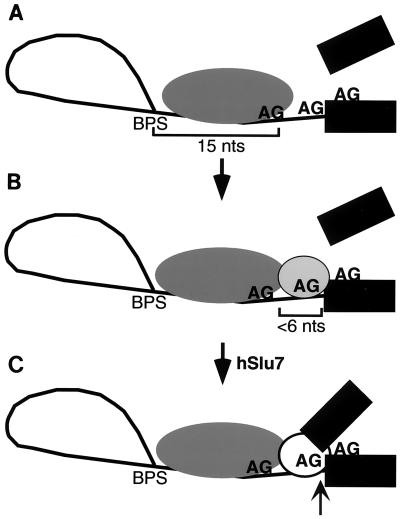FIG. 5.
Model for AG selection. (A) The proximal AG positions the splicing machinery downstream of the BPS. Recognition of this positioning AG is flexible, as this AG can be located outside the optimal distance for step II (in this example, 15 nt). (B) The AG used in the transesterification reaction is selected in a second step. This transesterification AG must be located within a narrow distance (<6 nt) downstream of the positioning AG. If a second AG is not present within this window, the positioning AG itself is used (but inefficiently). In the absence of hSlu7, the transesterification AG is sequestered, and step II is blocked at this location. (C) In the presence of hSlu7, the sequestered transesterification AG is exposed, and catalysis of step II (arrow) occurs.

